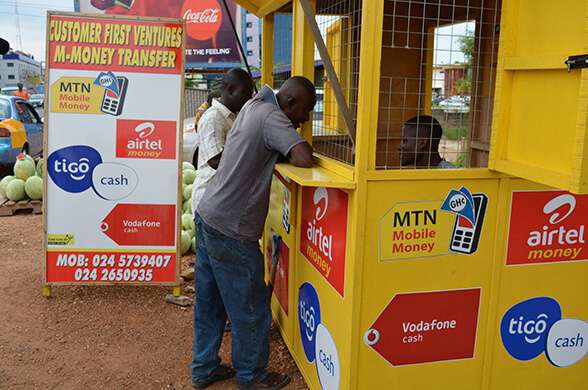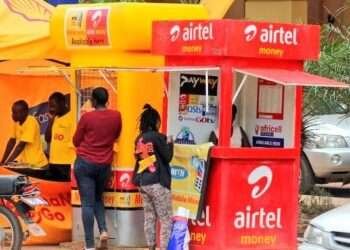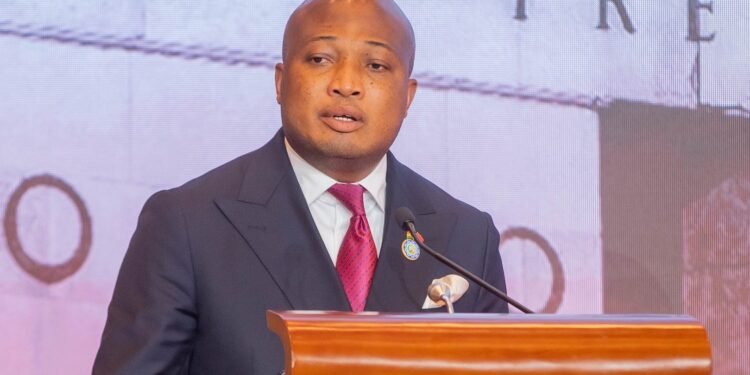Ghana’s digital finance space has raised the bar once again, proving why the country continues to lead as one of Africa’s most vibrant and fast-growing mobile money markets.
According to the Bank of Ghana’s November 2025 Summary of Economic and Financial Data, mobile money transaction value surged to an all-time high of GHS 434.7 billion in October 2025. This marks one of the strongest monthly performances ever recorded, highlighting the deepening reliance on digital payment channels by households, businesses, and government agencies.
The numbers highlight just how much Ghana’s financial sector has changed, with digital wallets now standing toe-to-toe with traditional bank accounts in how often people use them, how much money moves through them, and how widely they’ve been adopted across the country.
The standout figure in the November 2025 report is the record-breaking GHS 434.7 billion in MoMo transaction value. This represents a sharp rise from the GHS 406.9 billion registered in September, continuing a growth trend that has accelerated throughout the year. It also marks a dramatic improvement from the GHS 298.6 billion recorded a year earlier in October 2024.
This represents a year-on-year expansion of more than 45%, a remarkable pace for a market that already leads Africa in per capita mobile money usage.
The surge reflects not only increased digital activity by individuals but also the widespread migration of merchants, SMEs, and corporate institutions into MoMo channels. Government agencies have also expanded electronic payment options, further boosting throughput.
Registered Accounts Approach 80 Million as Adoption Expands
A major driver of rising transaction values is the continuous growth in mobile money registrations. The data shows that registered MoMo accounts hit 79.1 million, up from 77.7 million in August and 71.9 million a year ago. This means Ghana now has more mobile money accounts than its total population, a phenomenon driven by multi-SIM usage, business accounts, and increasingly digital consumer habits.
Active accounts — a more meaningful indicator — rose to 25.3 million, marking a steady improvement from 23.3 million in October 2024. The rise in active usage underscores the integration of mobile money into everyday life, from paying school fees and utility bills to receiving remittances and purchasing goods online.
The strength of Ghana’s mobile money ecosystem rests on a vast network of agents, and the latest numbers show continued expansion in this area. Registered agents increased to 949,000, while active agents rose to 453,000 across the country. This makes Ghana one of the most densely served mobile money markets globally.
The agent network plays a critical role in maintaining liquidity, facilitating cash-outs, onboarding new users, and supporting the informal sector, which heavily relies on MoMo for business transactions.
This expanding agent footprint has helped bridge financial access gaps, especially in underserved rural communities where bank branches are limited.
Transaction Volumes Reach 893 Million — A New Monthly Peak
Beyond value, mobile money also recorded significant growth in transaction volumes. Total MoMo transactions surged to 893 million in October, the highest recorded in 2025. This is a sharp jump from 830 million in September and 728 million a year earlier.
The volume explosion shows that MoMo is becoming the default payment method for microtransactions, retail payments, peer-to-peer transfers, and service payments. The preference for MoMo over cash continues to grow due to convenience, safety, speed, and the wide availability of agents.

The balance on mobile money float — the total amount of electronic money backed by bank deposits — rose to GHS 31.0 billion, its highest level ever. This is a powerful indicator of trust in the system, showing that users are increasingly comfortable storing money digitally instead of cashing out immediately.
Higher float balances contribute to liquidity in the banking system, enabling banks to extend more credit while supporting monetary stability.
Interoperability Boosts Seamless Digital Payments
Mobile money interoperability, which allows cross-network transfers, recorded strong performance with GHS 5.0 billion in transaction value and 25.9 million transactions in October. This represents one of the most significant usage peaks since full interoperability was launched.
Cross-network transfers have increased financial flexibility, reduced friction in the payment system, and boosted competition among mobile money operators.
The surge in mobile money continues to erode the dominance of traditional payment instruments. The number of cheque transactions dropped to 437,000, down significantly compared with previous years, while cheque transaction value remained relatively stagnant at GHS 34.5 billion.
Similarly, while ACH Direct Debit and Credit systems remain strong in corporate and bulk payments, their growth is far outpaced by MoMo’s rapid expansion, signalling a structural shift toward digital wallets.
The momentum suggests that the shift toward a cash-lite economy is accelerating, with mobile money leading the charge in transforming how individuals and businesses transact, save, and manage money.
READ ALSO:Ghana’s Banking Assets Explode Past GHS 423bn as Sector Posts Strongest Recovery Since DDEP























